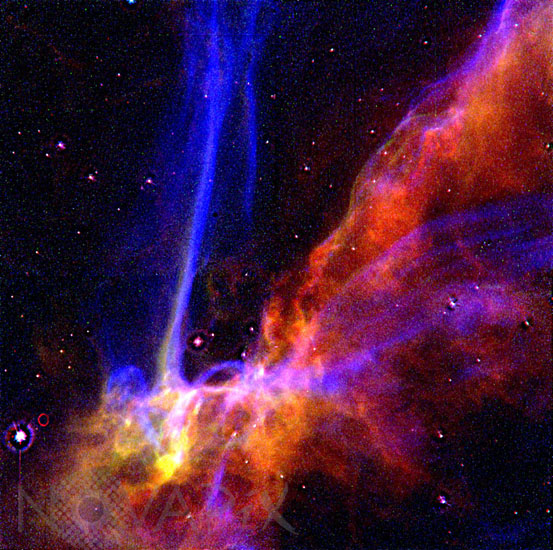Photo Agency - Astronomy - Space - Nature

Part of the Veil nebula
author: Nasa/Novapix
reference: a-snv11-00037
Image Size 300 DPI: 25 * 25 cm
This is an image of a small portion of the Cygnus Loop supernova remnant, taken with the Wide Field and Planetary Camera on NASA's Hubble Space Telescope on April 24, 1991. The Cygnus Loop, also known as the Veil Nebula, is well-known to amateur astronomers as a challenging target for larger telescopes. It has a diameter of about 3 degrees (corresponding to 6 full moons). This spectacular nebula was created when a massive star ended its days in an immense supernova explosion. A bubble of dust and gas was expelled into space and has continued to expand outwards ever since. The photo is a combination of separate images taken in three colors. Oxygen atoms (blue) emit light at temperatures of 30,000 to 60,000 degrees Celsius (50,000 to 100,000 degrees Fahrenheit). Hydrogen atoms (green) arise throughout the region of shocked gas. Sulfur atoms (red) form when the gas cools to around 10,000 degrees Celsius (18,000 degrees Fahrenheit).
Contact : Stéphane Aubin +33-(0)9-51-26-53-76
© Novapix - All rights reserved


